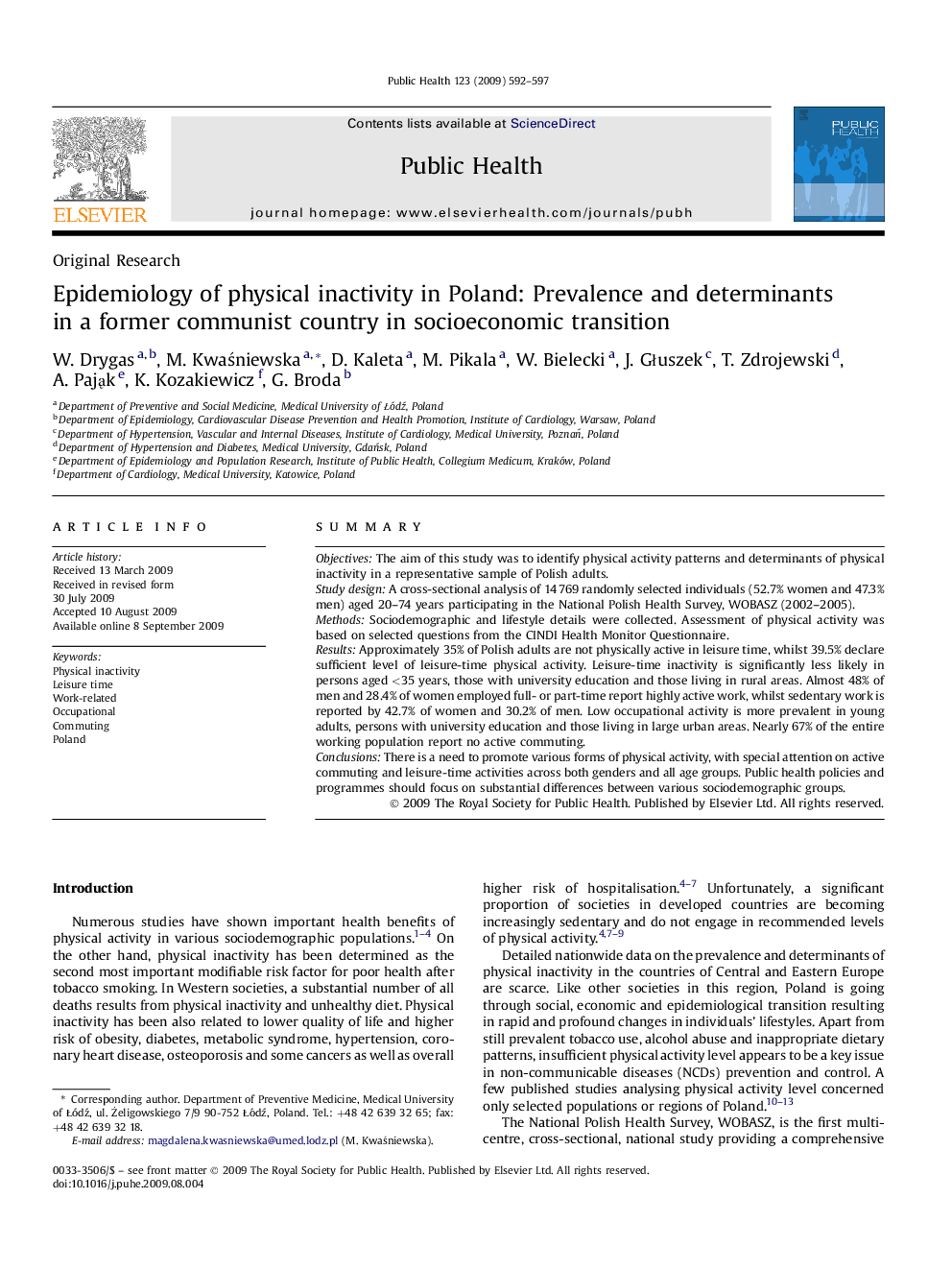| Article ID | Journal | Published Year | Pages | File Type |
|---|---|---|---|---|
| 1088030 | Public Health | 2009 | 6 Pages |
SummaryObjectivesThe aim of this study was to identify physical activity patterns and determinants of physical inactivity in a representative sample of Polish adults.Study designA cross-sectional analysis of 14 769 randomly selected individuals (52.7% women and 47.3% men) aged 20–74 years participating in the National Polish Health Survey, WOBASZ (2002–2005).MethodsSociodemographic and lifestyle details were collected. Assessment of physical activity was based on selected questions from the CINDI Health Monitor Questionnaire.ResultsApproximately 35% of Polish adults are not physically active in leisure time, whilst 39.5% declare sufficient level of leisure-time physical activity. Leisure-time inactivity is significantly less likely in persons aged <35 years, those with university education and those living in rural areas. Almost 48% of men and 28.4% of women employed full- or part-time report highly active work, whilst sedentary work is reported by 42.7% of women and 30.2% of men. Low occupational activity is more prevalent in young adults, persons with university education and those living in large urban areas. Nearly 67% of the entire working population report no active commuting.ConclusionsThere is a need to promote various forms of physical activity, with special attention on active commuting and leisure-time activities across both genders and all age groups. Public health policies and programmes should focus on substantial differences between various sociodemographic groups.
